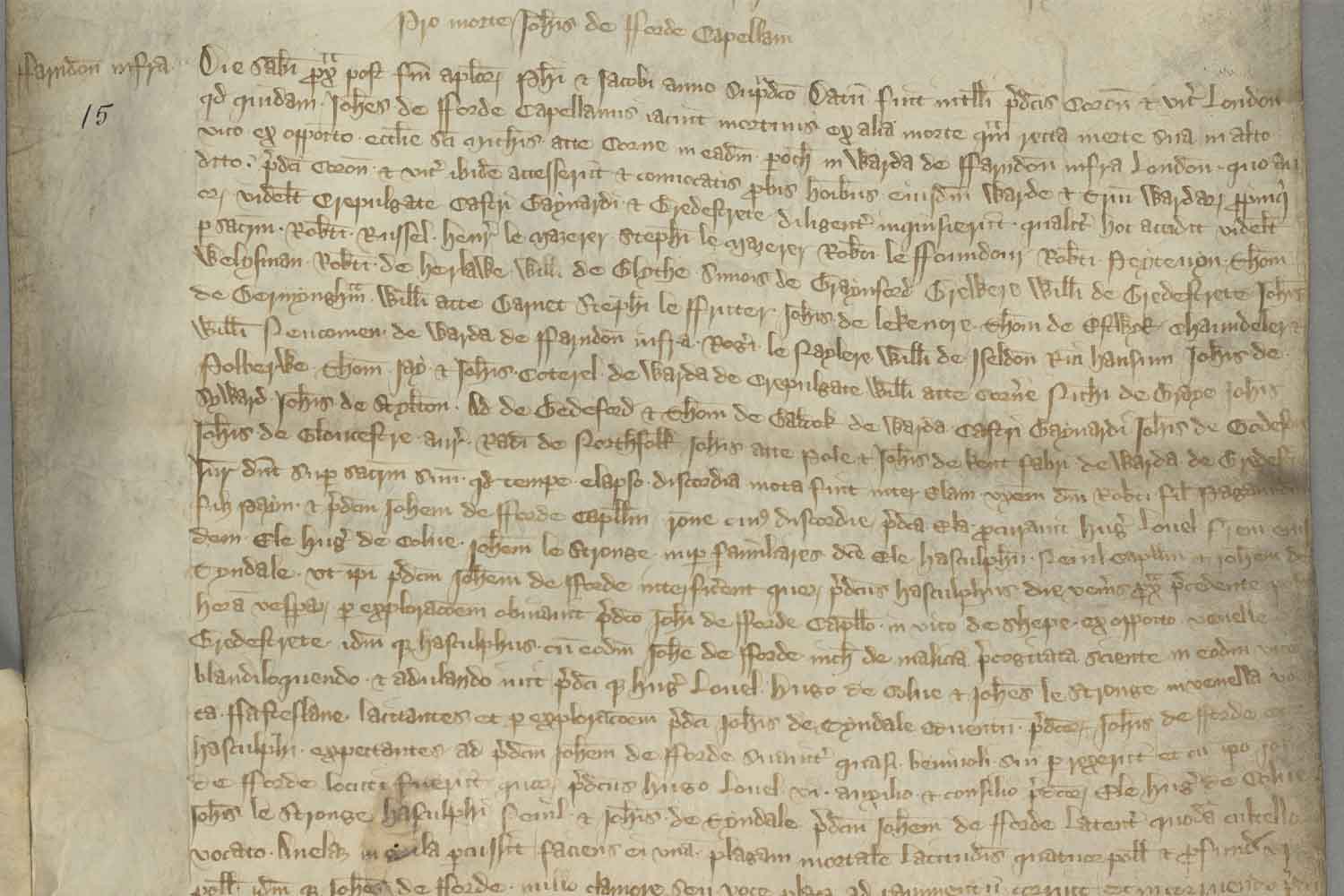A forgotten murder in medieval London reveals the story of Ela Fitzpayne, a rebellious noblewoman who defied the Church and may have ordered a priest’s execution.

©The London Archives
Table of contents
A priest with his throat slit in broad daylight. A noblewoman publicly shamed for her “carnal sins.” A bloody feud between the Church and the aristocracy that ends in a mafia-style execution. No, this isn’t a gritty historical thriller—it’s a true story, buried for centuries and only now resurfacing thanks to the Medieval Murder Maps project by the University of Cambridge.
At the heart of it all is Ela Fitzpayne, a defiant aristocrat who scandalized the Church and, according to researchers, masterminded a revenge killing nearly 700 years ago.
Public punishment, barefoot and humiliated
It was January 1332 when Archbishop of Canterbury Simon Mepham penned a scathing letter to the Bishop of Winchester. His target: Ela Fitzpayne and her “sins of the flesh.” The digitized document, published for the first time, speaks bluntly of affairs with knights, married men, and even clergymen—among them Reverend John Forde, rector of Okeford Fitzpaine in Dorset, a parish under Ela’s family control.
To atone for her behavior, Ela was stripped of all finery: no gold, no pearls, no precious stones. But that wasn’t the worst of it. She was ordered to walk barefoot down the entire length of Salisbury Cathedral’s nave, the longest in England—every autumn, for seven years, carrying a candle weighing nearly 4 lbs (1.8 kg).
It wasn’t just a punishment. It was a performance designed to break her noble pride. But Ela, far from humbled, fled to Rotherhithe, defied the Church, and was excommunicated. And she vowed revenge.
The priest who talked too much
Historians now believe it was John Forde who reported Ela to the Church—perhaps to save his own neck or win favor with his superiors. But Ela didn’t forget. Forde hadn’t always been her accuser. In fact, back in 1321, he was her accomplice.
That year, Ela, her husband Sir Robert Fitzpayne, and Forde himself took part in a violent raid on a Benedictine priory in Somerset. They smashed doors, looted buildings, cut down trees, and stole over 200 animals—oxen, sheep, and pigs—hauling them back to Stogursey Castle.
It wasn’t a random act. The priory had ties to a French abbey, and England was already bracing for conflict. The Hundred Years’ War was on the horizon. According to Professor Manuel Eisner of Cambridge, Forde was caught in a bind—loyal to the Fitzpaynes, yet answerable to the Church. When the castle came under scrutiny, Forde likely distanced himself—and, in doing so, may have confessed his affair with Ela, offering her up to the ecclesiastical wolves.
A blade to the throat, in front of a crowd
On May 3, 1337, sometime after vespers but before dusk, John Forde was walking along Cheapside, one of the busiest streets in medieval London, with fellow cleric Hasculph Neville. They were nearing St. Paul’s when four men ambushed him in the fading light.
Leading the group was Hugh Lovell, Ela’s brother. He slit Forde’s throat with a 12-inch (30 cm) dagger. Two others—John Strong and Hugh Colne, former servants of the Fitzpayne family—stabbed him in the abdomen. The attack was witnessed by a massive jury of 33 men, one of the largest ever recorded in the coroner’s rolls of the time. Yet none of the assailants were brought to justice.
Only Hugh Colne was arrested—five years later, in 1342—and sent to Newgate, London’s notorious prison. The rest vanished. According to Eisner, they were likely shielded by the social status of those who had ordered the hit.
Forde was murdered in Westcheap, the beating heart of medieval London—a chaos of taverns, markets, workshops, and guildhalls. It was the city’s most violent quarter, a stage for public floggings, pillories, duels, and now, a very public execution.
Cambridge researchers argue the message was clear: like modern gangland killings, this wasn’t just an act of vengeance—it was meant to be seen, to intimidate, and to reinforce power in a world where the law was fragile and the elite, untouchable.
Ela Fitzpayne: rebel, lover, killer?
Despite her role in the story, Ela Fitzpayne was never punished. She stayed by her husband’s side until his death in 1354, and inherited his lands. She was a woman ahead of her time—unafraid to defy the Church, to lead an assault on a monastery, and possibly to order a murder with cold political calculation.
As Professor Eisner puts it:
“An extraordinary figure—a 14th-century woman who challenged the rules of her time with fierce determination. In a world dominated by men and dogma, Ela Fitzpayne made her mark—for better or worse.”
Source: Criminal Law Forum
